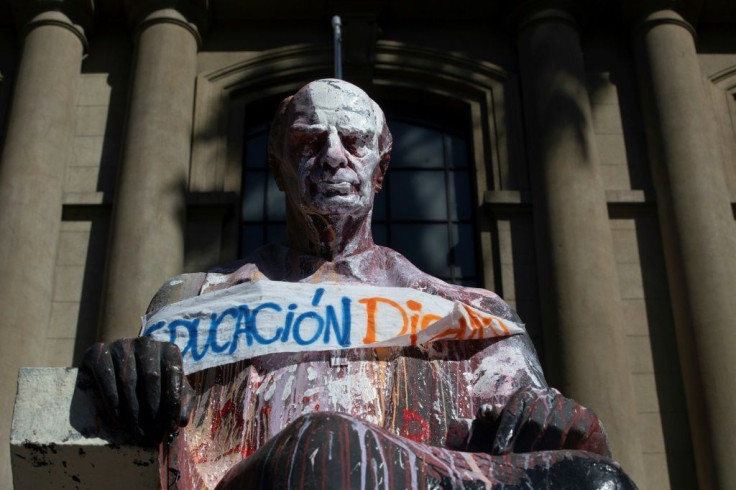Crippling Student Loans Contribute To Chile's Protests

Spiralling student debt, with some loans the size of a mortgage, pricey tuition fees and a troubled education system have helped fan the flames of Chile's deadly protests.
"I don't know anymore how much I owe at this stage," said Paulina Gomez, 34, who graduated over a decade ago.
Two weeks on from the start of Chile's deadly social protests, Gomez and others gathered at one of the daily citizens' meetings taking place in Santiago to discuss crippling student debt that they say is crushing the hopes of many young people.
"With interest I owe more than the total cost of the course now. It's going up every day and I had to take out a loan to pay the interest on my first loan," said Gomez, a journalist.
State guarantee
"At the end of the 90s, state resources proved insufficient to finance higher education," said Gonzalo Mu?oz, an education specialist at Santiago's Diego Portales University.
A loan program known as CAE emerged, with bank loans to students guaranteed by the state, a financial device that has fuelled student anger against Chile's "neo-liberalism".
Guillermo Jobia, a 24-year old law student who has just graduated, said he paid "the price of a house, and that was being on a scholarship."
"I still have to pay 20 million (pesos)," equivalent to around $27,000.
"I think I'll never see the end of it, unless I get a job that pays, I don't know, a salary that would be impossible here."
Most young Chileans work during their studies in low-paid jobs which don't provide enough income to pay off their debts. Chile's minimum monthly wage amounts to $420.
Gunther Birchmeier, 30, worked as "a waiter, or in a supermarket at night or at weekends" to earn his $550 monthly tuition fees. But he couldn't keep it up. Eventually, "the university blocked me and I couldn't continue studying."

Birchmeier says he has been repaying student debt for the past five years, "and I still have 15 left."
"You have to take the whole issue of interest into account," said Birchmeier. "They lent me 10 million (pesos, around $13,300) and I'm paying back about 20 million, 100 percent more."
Birchmeier, who works in a cybersecurity company, has no savings. "I'm stuck. If I get fired, I have nothing."
'Anguish'
"I'm not paying currently. I don't have the cash." The interest alone "is now 5 million pesos" -- around $6,700.
"The politicians of this country must give us a definitive solution to end this anguish, because it is anguish to have to deprive yourself of other things in order to pay for this. It's never-ending."
The next generation is what worries Gomez now, particularly the challenges facing her 10-year-old son.
"Public education in Chile is horrible. There are 40 per class. Only one teacher. We'll have to tighten our belts to send him him to a private school."
The sense of crisis around Chile's education system has emerged during every social conflict since the end of the Pinochet regime in 1990. Chile's largest student demonstrations for decades, the "Penguin Revolution" -- so called because of the students' dark blue and white uniforms -- took place in 2006.
"The difficulties we see now mainly affect young people who have finished their studies in the last 15 years," said Munoz, the education expert.
"The youngsters of today will have different conditions" he said. "The Bachelet system has changed the situation."
In 2015, during her second term, then-president Michelle Bachelet allowed Chile's poorest to have free access to university with a landmark education reform, though the high postgraduate debt burden still remains for many Chileans.
© Copyright AFP {{Year}}. All rights reserved.




















